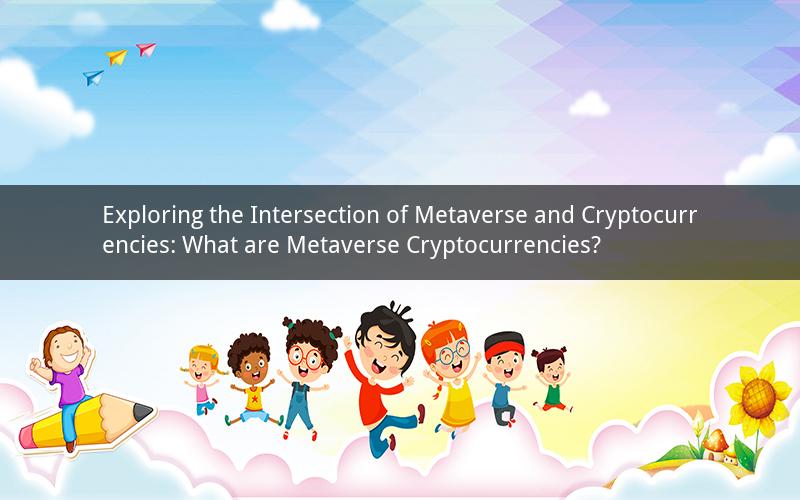
Introduction:
The concept of the metaverse has gained significant attention in recent years, with its potential to revolutionize various aspects of our lives. As the metaverse continues to evolve, cryptocurrencies have emerged as a crucial component in its ecosystem. This article delves into the world of metaverse cryptocurrencies, exploring their definition, significance, and potential future developments.
1. Definition of Metaverse Cryptocurrencies:
Metaverse cryptocurrencies are digital assets designed to facilitate transactions and interactions within the metaverse. These cryptocurrencies are built on blockchain technology, ensuring transparency, security, and decentralization. Unlike traditional cryptocurrencies like Bitcoin or Ethereum, metaverse cryptocurrencies are specifically tailored to the needs of the metaverse ecosystem.
2. Significance of Metaverse Cryptocurrencies:
a. Facilitating Transactions: Metaverse cryptocurrencies enable users to buy, sell, and trade virtual assets within the metaverse. This includes virtual real estate, clothing, accessories, and other digital goods. By using cryptocurrencies, users can bypass traditional payment methods and enjoy a seamless transaction process.
b. Incentivizing Participation: Cryptocurrencies within the metaverse serve as a means of incentivizing user participation. By rewarding users with cryptocurrencies for their actions, developers can encourage engagement and foster a vibrant community within the metaverse.
c. Ownership and Transferability: Metaverse cryptocurrencies provide users with true ownership of their virtual assets. Unlike traditional virtual goods, which can be easily copied or deleted, cryptocurrencies ensure that users have full control over their digital possessions, allowing for secure and transferable ownership.
3. Types of Metaverse Cryptocurrencies:
a. Utility Tokens: Utility tokens are designed to provide specific functionalities within the metaverse. These tokens can be used to purchase goods, access services, or participate in governance. Examples include Decentraland's MANA and The Sandbox's SAND.
b. Governance Tokens: Governance tokens grant users voting rights and influence over the development and direction of the metaverse platform. Holders of these tokens can participate in decision-making processes, propose changes, and vote on important issues. Examples include Enjin Coin (ENJ) and Axie Infinity's AXS.
c. Asset Tokens: Asset tokens represent ownership of real-world or virtual assets within the metaverse. These tokens can be used to purchase or trade specific items, such as virtual real estate or collectibles. Examples include NFTs (Non-Fungible Tokens) and digital art tokens.
4. Potential Future Developments:
a. Integration with Real-World Assets: As the metaverse continues to grow, there is a possibility of integrating real-world assets with metaverse cryptocurrencies. This could enable users to own and trade virtual representations of physical assets, such as real estate or artwork.
b. Cross-Metaverse Compatibility: Efforts are being made to ensure compatibility between different metaverse platforms. This would allow users to transfer their cryptocurrencies and assets across various metaverse ecosystems, enhancing the overall user experience.
c. Regulatory Framework: As the metaverse and cryptocurrencies gain popularity, governments and regulatory bodies are likely to develop frameworks to govern these technologies. This could include regulations on security, consumer protection, and taxation.
5. Conclusion:
Metaverse cryptocurrencies play a vital role in the development and growth of the metaverse ecosystem. By providing a secure, transparent, and decentralized means of conducting transactions and interactions, these cryptocurrencies are set to revolutionize the way we engage with virtual worlds. As the metaverse continues to evolve, the potential for innovation and growth in this space is immense.
Questions and Answers:
1. Q: What is the main purpose of metaverse cryptocurrencies?
A: The main purpose of metaverse cryptocurrencies is to facilitate transactions, incentivize participation, and provide ownership and transferability of virtual assets within the metaverse.
2. Q: How do metaverse cryptocurrencies differ from traditional cryptocurrencies?
A: Metaverse cryptocurrencies are specifically designed to cater to the needs of the metaverse ecosystem, while traditional cryptocurrencies like Bitcoin or Ethereum are more generalized and used for a wide range of purposes.
3. Q: Can metaverse cryptocurrencies be used outside of the metaverse?
A: While metaverse cryptocurrencies are primarily used within the metaverse, some of them may have real-world applications or be exchangeable for other cryptocurrencies or fiat currencies.
4. Q: Are all metaverse cryptocurrencies the same?
A: No, there are different types of metaverse cryptocurrencies, including utility tokens, governance tokens, and asset tokens, each serving different purposes within the metaverse ecosystem.
5. Q: What challenges do metaverse cryptocurrencies face in the future?
A: Metaverse cryptocurrencies may face challenges related to regulatory frameworks, security concerns, and scalability issues. Ensuring compatibility between different metaverse platforms and addressing these challenges will be crucial for the growth and adoption of metaverse cryptocurrencies.